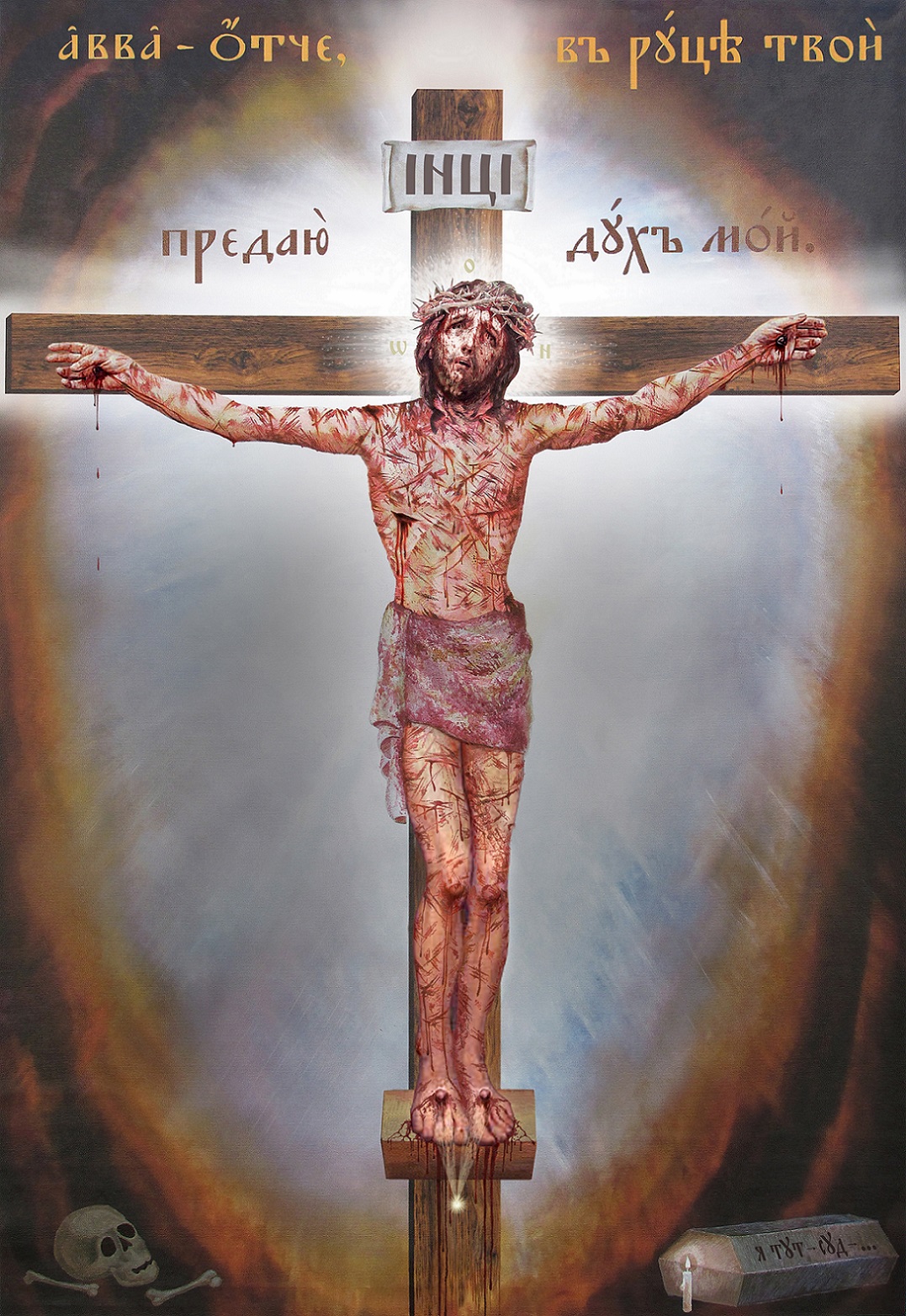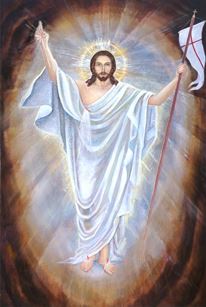Death and Resurrection of Christ
/a contemplative prayer/
Download: New edition of the prayer booklet for the celebration of Sunday – format doc , format pdf
Download: Death and Resurrection of Christ /a contemplative prayer/
Watch all videos on: Youtube channel
Introduction
The spiritual resurrection of the Church will begin through a restored celebration of the Day of Resurrection – Sunday.
Early Christians had four fundamental spiritual pillars: a) the apostles’ teaching, b) fellowship (koinonia), c) common prayers, d) the Eucharist (see Acts 2:42). All these four elements need to be realized on the day which is wholly consecrated to God. It is not sufficient just to attend the Divine Liturgy (the Eucharist), but Christians also need to gather in small communities (cells). Again, the pattern for us is the Apostles and early Christians. They not only attended the temple but also gathered in their homes.
We bring forward a model for celebration of the Resurrection Day (every Sunday) as well as prayer models for contemplation of the sufferings of our Lord and Saviour Jesus Christ.
The means for the renewal of the Church
The basic pillars of spiritual life are:
1) contemplation of the Last Things – death, judgement, eternity
2) contemplation of Christ’s suffering, death and resurrection.
At the beginning of the third millennium, mass apostasy from Christianity reaches its peak. Historical-critical theology (HCT) has cast doubt upon the Divinity of Christ, His redemptive sacrifice on the cross, His resurrection, and even upon the inspiration of the Scripture. The Nostra aetate declaration and the apostatical gesture of John Paul II in Assisi in 1986 replaced reverence for God by reverence for demons and paganism. This led to destruction of the Christian identity and true mission. The most powerful means of demonization of the Church is obedience to the apostatical hierarchy. These traitors are in unity of the spirit with Freemasons. Under false obedience, masses of the Catholic believers officially follow the way to eternal damnation.
In the years 2009-2010, the Bishops’ Synod of the Ukrainian orthodox Greek-Catholic Church (UOGCC) appealed to all Catholic hierarchs to confess the true faith and to renounce heresies. They did not do so (with only few exceptions). They have fallen under God’s curse. The sacraments which they administer – Holy Orders, Divine Liturgy, Confession – are valid no longer.
Since Pope Benedict XVI promulgated blasphemous beatification of the apostate John Paul II, he himself brought down God’s anathema upon himself. In fact, by this gesture he pronounced a posthumous anathema upon John Paul II as well. The beatification was a public tragicomedy. Through this very gesture, both these Popes were publicly excommunicated from the Church.
It is God who declares this anathema. It is laid down in the Word of God, in the statement of the Apostle Paul: “Even if we, or an angel from heaven, preach any other gospel to you than what we have preached to you, let him be accursed (anathema)! As I have said before, so now I say again, if anyone preaches any other gospel to you than what you have received, let him be accursed.” (Gal 1:8-9)
The sincere priests and believers ask: What shall we do? How are we to discern at this time of utter confusion and betrayal on the part of the Church hierarchy? The Church is one, holy, universal (Catholic), apostolic. These signs of the orthodoxy of the Church are in Jesus Christ, in His Gospel, in the apostles’ teaching and in the tradition of the saints. Traitors and heretics who have the spirit of antichrist, even though they hold high offices, do not belong to this holy Church. Under their rule she has become the harlot of antichrist. Those who have fallen away from Christ and from the Gospel and stubbornly refuse to repent will be eternally condemned. There are no alternative ways to salvation (cf. Acts 4:12).
To the question what we should do there was, is and always will be only one answer by God: “Repent, and believe in the Gospel” (Mk 1:15), and not in the apostatical Church hierarchy. How is one to repent and how to believe in the Gospel? One has to admit one’s sin. To call it by its proper name. To break with it as well as with the heresy of the HCT and with the heretical spirit of Assisi. All this contradicts the orthodox doctrine of the Church. After making this step, it is necessary to receive Jesus as one’s personal Saviour and Lord. And then to follow Him in accordance with the Gospel.
The Bishops of the BCP offer here a spiritual framework of the revival of believers and of the whole Church. It contains three points:
A) contemplation of the sufferings of the Lord,
B) celebration of Sunday,
C) the liturgical hours.
Ad A) Contemplation of the sufferings of the Lord
It consists of reflections on Gethsemane, the Way of the Cross and the seven last words from the cross.
The optimal time for reflection is from 20:00 to 21:00, the so-called holy hour.
On Thursday from 20:00 to 21:00 we contemplate:
a) the Last Supper and Gethsemane,
b) from Gethsemane to Golgotha,
c) the first word from the cross.
On Friday from 20:00 to 21:00 we contemplate:
a) the second word from the cross
b) the third word from the cross
c) the fourth word from the cross.
On Saturday from 20:00 to 21:00 we contemplate:
a) the fifth word from the cross
b) the sixth word from the cross
c) the seventh word from the cross.
Ad B) Celebration of Sunday
On Saturday after 21:00, the night begins when we experience Christ’s resurrection. It is not known exactly at what hour it happened, and therefore the whole night is holy. We begin with one-hour contemplation of the Resurrection of Christ:
a) the reality of Christ’s resurrection,
b) the Mother of Jesus’ resurrection with Christ,
c) our resurrection with Christ.
We pray so from 21:30 to 22:30.
We can pray the second hour either during the night or early in the morning:
a) the apparition of angels rolling away the stone,
b) the risen Christ meeting Mary Magdalene,
c) the risen Christ meeting the women.
Third hour:
a) the risen Christ meeting with Peter,
b) the meeting by the Lake of Gennesaret,
c) Christ’s Ascension into heaven.
Fourth hour from 8:00 to 9:00 – we live in prayer the reality of the descent of the Holy Spirit with faith:
a) baptism with the Holy Spirit,
b) baptism with fire
c) asking for and receiving the gift of prophecy.
In the afternoon or during the holy hour from 20:00 to 21:00 we pray the fifth hour:
a) Emmaus,
b) the meeting with the apostles,
c) the meeting with Thomas.
The community of believers meets together on Sunday afternoon. In accordance with the Acts of the Apostles 2:42, their meeting includes:
a) prayer,
b) a biblical lecture (one hour)– i.e. the apostles’ teaching
c) time of sharing (one hour) – i.e. fellowship
d) the liturgy (one hour) – unless one attended the liturgy at another time.
Ad C) The liturgical hours
Church tradition had it that at regular time intervals the believers, especially the religious, stopped several times a day to pray. (Ps. 119:164) We propose restoration of this well-tried tradition of the Church. This concerns the time when getting up, 9:00, 12:00, 15:00, 18:00, 21:00 and before bedtime. We pray a short prayer of perfect contrition and perfect love. At the end of the prayer we repeat a verse from the Holy Scripture, which is given for two weeks. The Word of Life for two weeks can be found on our web pages: http://vkpatriarhat.org/en/?p=4955 .
+ In the name of the Father and of the Son and of the Holy Spirit. Amen.
“Ephphatha!” (Be opened!) “I am self-willed. I am a hedonist. I am a critic.”
“Maran atha!” (Come, O Lord!) “Jesus, Jesus, Jesus, have mercy on me!” (5×)
“Shema” (Hear), “Israel, love God! Jesus, my God, I love You with all my heart, with all my soul and with all my strength. Now I lose my soul for Your sake and the Gospel’s.”
The Word of life: (a verse from the Holy Scripture for 14 days; repeated 3×)
“From this moment I do everything + in the name of the Father and of the Son and of the Holy Spirit.” (3×)
Practical advice:
– It would be good if the prayer was led by one leader. This leader would have the task of 1reading the introduction before each third, 2watching the time and 3setting the rhythm of prayer in parts b and c. The purpose is to be in unity and not disturb each other during the prayer.
– The reading of introductions is a strong motivation for penetrating into the given truths, so they should be read out loud and clear.
– The last part of the resurrection models is always a song, so it is necessary that one person should be responsible for singing.
– After one or two hours of prayer there should be at least 10-20 minutes given to mutual sharing. A testimony of personal experience of the individual truths is an encouragement for all members of the prayer group.
– As for the fellowship and discussions, they are stemming from the apostles’ teaching and dealing with problems which the Christians face in the present-day world – how to live truly with Christ today, how to renew the family life, how to promote sound moral principles, how to fight against the manipulation of children, against demoralization etc. It is necessary for man to become head of the family again and to be aware of his responsibility for salvation of the souls of those whom God has entrusted to him.
– Since the priests celebrate the seventh day at the altar, they cannot celebrate this day of resurrection in small groups in the above-mentioned biblical way. They should therefore choose another day (best Monday) which they will devote to prayer, God’s Word and fellowship. We have to point out that without interior prayer the priestly community will be incapable of spiritual growth. This brochure contains models for interior prayer – a prayer of the heart.
This model for the celebration of Sunday may just as well be practised by youth, seminarians, women or children.











